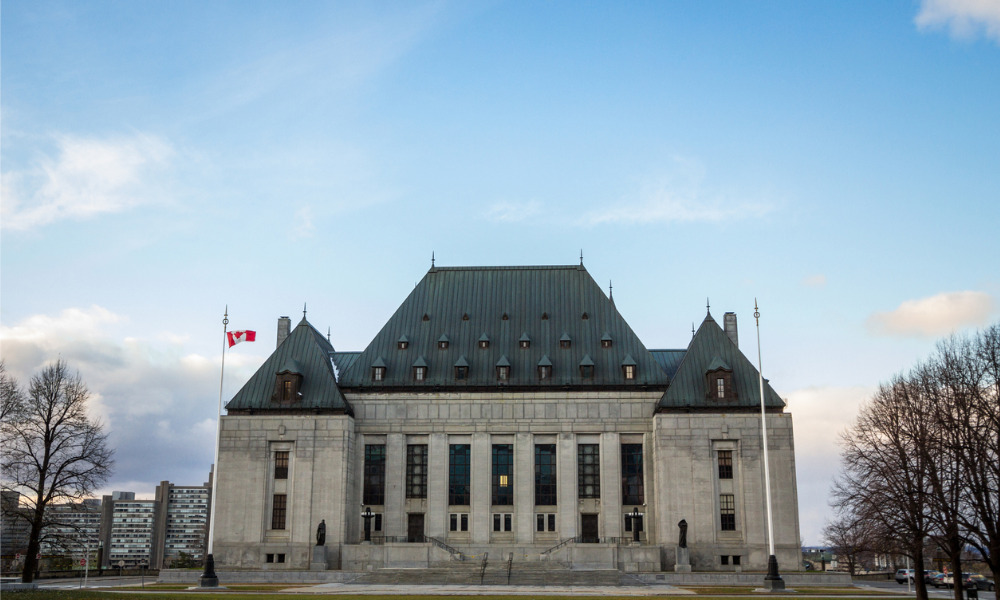
All applications for leave to appeal must now be filed in a fully electronic format

The Supreme Court of Canada has amended its Rules of the Supreme Court of Canada to simplify the leave application process, and, for the first time, to require that applications for leave to appeal be filed in a fully electronic format. In addition, agents are no longer required to be used for proceedings.
The amendments will come into effect on Jan. 27.
The Rules of the Supreme Court of Canada are reviewed on an ongoing basis and amended every two years, explains Barbara Kincaid, General Counsel of the Supreme Court of Canada. Chief Justice Richard Wagner, who took office in December 2017, had requested a thorough review of the rules, she says, in part to improve electronic processes and electronic filing.
“The most significant amendments are to the leave application process,” Kincaid told Canadian Lawyer. “The intent of the amendments is to simplify the leave application process,” comprising the notice of application, the lower court decisions that are sought to be appealed, and the memorandum of argument.
“The noteworthy amendment is to Rule 25(1)(d), under which parties have tended to include a great deal of supporting material,” says Kincaid. “The amendment to paragraph (d) limits this material to transcripts or evidence contained in the lower court record. This is where the process is streamlined.”
Agents
The requirement of the use of agents – that is, lawyers practising in the National Capital Region -- for proceedings before the Supreme Court had been raised by members of the bar formally and informally, Kincaid says, and the court undertook a consultation with the Canadian Bar Association as well as with agents (i.e., lawyers practising in the National Capital Region) to get feedback.
This requirement, with the expense that entailed, was perhaps of particular concern for intervenors, who are not principal parties to an appeal but nonetheless had to bear the cost of the additional legal personnel. Parties “may very well continue to use the agents because they have developed an expertise in Supreme Court of Canada practice, and then it can be more efficient, says Kincaid; “it will be interesting to see, over the year, what the practice will be.”
Filing leave applications
Under the current rules, only two elements of the application for leave are required to be filed in electronic form: the notice of application for leave to appeal and the memorandum of argument. Under the new rules all elements will be filed and served electronically.
The printing requirement is reduced as the parties need only file the original (signed) version of the leave application and two copies, rather than five copies, Kincaid says. This requirement for printed copies remains suspended due to the novel coronavirus pandemic, however, as limited court registry staff are working in the courthouse and have less capacity to process from their homes.
Additionally, if hyperlinks to the reasons of the lower courts are available, the applicant must include them in the electronic version of the leave application.
An applicant is no longer required to provide an affidavit in support of their leave application.
As well, an applicant seeking either leave to appeal or leave to cross-appeal must send the electronic version of the application to all other applicants, all respondents and all interveners by email and file a read or delivery receipt with the registrar.
Other amendments
Under Rule 79, pertaining to a judgment of the court, a judge may now sign a judgment by facsimile.
The Court has amended all the related forms accordingly, and the Registry will be updating the Guidelines for Preparing Documents to be Filed with the Supreme Court of Canada (Print and Electronic) to reflect amendments closer to their coming-into-force date.
Using technology
The Supreme Court currently has a file-sharing platform to use when documents are too large to file by e-mail, and is developing an electronic filing portal.
Chief Justice Richard Wagner has been a proponent of modernizing the court system by employing more technology.
“Probably one of the few good sides of this pandemic is that we'll be using more technology in the future,” Wagner told Canadian Lawyer in an interview in May, discussing the response by the court to restrictions entailed by the pandemic, which included Supreme Court judges working from home and considering leave applications electronically.
“My feeling is that we'll have to use more technology, so that we will not be back to the so-called ‘normal situation’ anymore.”